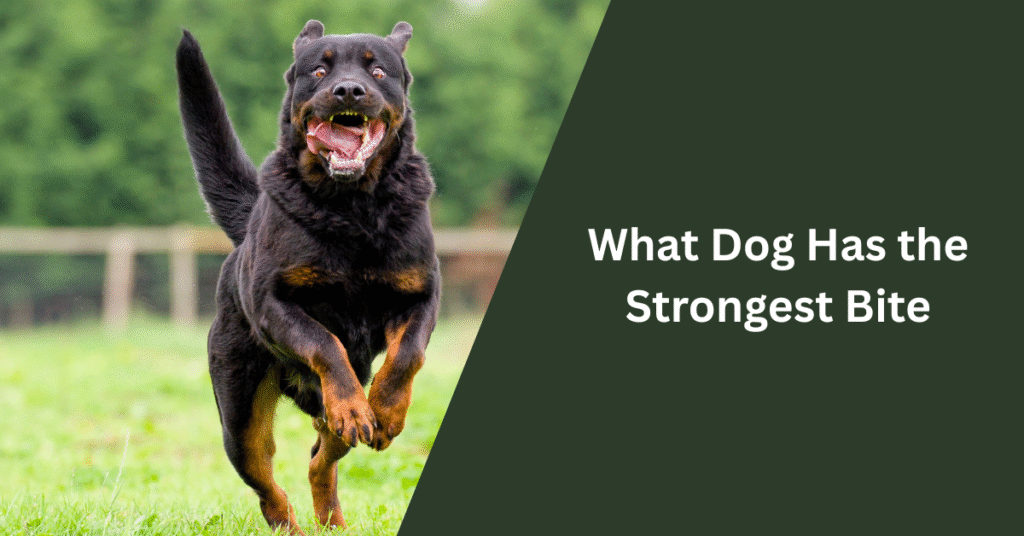The Kangal has the strongest bite of any dog, measured at 743 PSI (pounds per square inch). This powerful Turkish guardian breed was developed to protect livestock from predators like wolves and bears. For comparison, a Rottweiler averages around 328 PSI and a German Shepherd about 238 PSI, making the Kangal’s bite unmatched.
Understanding Canine Bite Force
Bite force is a measurable indicator of a dog’s jaw strength and depends on several biological and physical factors. It is expressed in pounds per square inch (PSI), which quantifies the pressure a dog can exert when biting. Various elements influence bite strength, including breed, jaw structure, and training.
What Is Bite Force and How Is It Measured
Bite force refers to the pressure applied by a dog’s jaws when biting down. It is typically measured using devices like bite force meters or pressure sensors placed between the teeth. These tools capture the maximum force exerted during a controlled bite.
Scientists often use cadaver studies and live animal tests to approximate bite force. However, measurements can vary due to testing methods, dog behavior, and equipment sensitivity. This makes exact bite force estimation challenging but still useful for comparisons.
Factors Affecting Dog Bite Strength
Several factors determine the bite strength of a dog. Breed plays a significant role—dogs bred for hunting or protection often have stronger bites. Jaw shape and muscle mass also influence the applied force.
Age and health impact bite force too; younger or weaker dogs typically exert less pressure. Training and temperament affect a dog’s willingness to bite hard. Additionally, head size and tooth alignment contribute to overall bite effectiveness.
Significance of PSI in Measuring Bite Force
PSI stands for pounds per square inch and measures the amount of force a dog applies per unit area. It provides a standardized way to compare bite strengths across different breeds or animals.
Higher PSI values indicate stronger bite pressure. For example, a breed with 250 PSI can exert more force than one with 150 PSI. PSI accounts for both muscle strength and jaw leverage, making it a critical metric in understanding bite capabilities.
Dog Breeds With the Strongest Bite
This section examines three dog breeds known for their powerful bite forces. Each breed combines physical strength, jaw structure, and bite pressure, making them notable for their specific roles and characteristics.
Kangal: The Record Holder
The Kangal is widely recognized for having the strongest bite force recorded in dogs, measuring around 743 PSI (pounds per square inch). Originating from Turkey, this breed was specifically bred to protect livestock from predators such as wolves and bears.
Its large skull and muscular jaw provide both power and endurance. The Kangal’s bite is not only strong but also precise, allowing it to hold onto threats without injury to itself. This breed’s temperament is calm yet fearless, making it an effective guardian rather than an aggressive animal.
Bandog: Powerful Mastiff Hybrid
The Bandog is a mix typically involving Bulldogs and Mastiffs. It is known for a bite force reaching approximately 730 PSI, making it one of the most formidable among dog breeds.
This hybrid was created for protection and security work. Its jaws are broad with thick muscles, delivering a crushing bite. The Bandog is also aggressive when needed but can be obedient in trained hands. It is valued for both strength and loyalty.
Cane Corso: Italian Protector
The Cane Corso, from Italy, has a bite force around 700 PSI. Originally a working dog used for hunting and guarding estates, it is strong and agile.
It has a large, well-muscled head and a short muzzle, which contribute to its significant bite power. The Cane Corso combines physical strength with intelligence and trainability, making it a versatile protector. It is calm with family but alert around strangers.
| Breed | Bite Force (PSI) | Origin | Primary Role |
|---|---|---|---|
| Kangal | 743 | Turkey | Livestock Guardian |
| Bandog | 730 | Mixed | Security and Protection |
| Cane Corso | 700 | Italy | Estate Guard & Hunter |
Comparing Bite Force Among Popular Breeds
Bite force varies significantly among dog breeds depending on jaw structure, muscle strength, and head size. Some breeds deliver a more concentrated bite power, which can be measured in pounds per square inch (PSI).
American Bulldog Bite Strength
The American Bulldog is known for a powerful and sturdy jaw. Its bite force typically ranges between 305 and 350 PSI. This strength is supported by its broad head and well-developed jaw muscles, enabling it to clamp down firmly.
This breed’s bite is used effectively in protection and working roles. American Bulldogs combine strength with agility, allowing controlled but strong bites rather than aggressive crushing.
Rottweiler Bite Force
Rottweilers have one of the strongest bite forces among domestic dogs, averaging about 328 to 340 PSI. Their wide skulls and muscular jaws contribute to this high bite pressure, ideal for tasks that require strong gripping.
Their bite is precise and forceful, making Rottweilers effective guard dogs. It’s important to note that bite strength alone does not dictate behavior, but biology plays a critical role in their physical capabilities.
German Shepherd Power
German Shepherds deliver a bite force of approximately 238 to 291 PSI, generally lower than the American Bulldog and Rottweiler. Despite this, their bite is still strong and reliable for police and protection work.
Their bite power is enhanced by quick jaw closure and controlled grip. This breed emphasizes training and discipline to maximize bite effectiveness rather than raw strength alone.
| Breed | Bite Force (PSI) | Notable Traits |
|---|---|---|
| American Bulldog | 305 – 350 | Broad jaw, strong clamp |
| Rottweiler | 328 – 340 | Wide skull, powerful grip |
| German Shepherd | 238 – 291 | Fast closure, trained control |
The Role of Genetics and Anatomy in Bite Strength
Bite strength in dogs depends heavily on physical traits shaped by genetics and anatomy. Specific bone structure and muscle development directly influence the force a dog can generate with its jaws.
Jaw Structure and Musculature
The shape and size of a dog’s skull affect leverage and bite force. Dogs with wider heads and shorter snouts, like the Rottweiler or Bulldog, typically produce stronger bites. This is due to the mechanical advantage provided by a shorter jaw to exert power efficiently.
Muscle mass around the jaw, particularly the masseter muscle, plays a crucial role. Larger, more developed muscles increase bite strength by generating more force when the jaw closes. The arrangement and attachment points of these muscles also affect how power is distributed during biting.
Evolutionary Adaptations
Dogs bred for protection, hunting, or carrying heavy loads often evolved stronger bites. Breeds like the Kangal have bite forces exceeding 700 PSI due to centuries of selective breeding focused on guarding livestock.
These adaptations include thicker skull bones and reinforced jaws, increasing durability and force transmission. Evolution favors specific traits in breeds where powerful bites improve survival or working efficiency, making bite strength a targeted genetic trait rather than accidental variation.
Why Bite Strength Matters in Working and Guard Dogs
Bite strength influences how effectively a dog performs in protection and security roles. It also affects training methods and the handler’s management of the dog’s behavior.
Protection and Security Roles
Bite strength is critical in deterring threats and restraining suspects. Dogs with stronger bites can hold onto aggressors without losing grip, reducing the risk of escape.
Security dogs often need to subdue intruders quickly and safely. The pressure from a strong bite can incapacitate or delay assailants, buying time for handlers or law enforcement.
Certain breeds are preferred because their bite force provides reliable control during high-stress situations. This trait ensures the dog can perform its duties without excessive harm.
Training and Behavioral Considerations
Training a dog with a strong bite requires careful control to prevent unintentional injury. Handlers focus on obedience, ensuring the dog bites only on command and releases immediately.
Positive reinforcement and consistent commands teach the dog to channel its bite strength appropriately. Aggression is managed to maintain safety for both the dog and people.
Understanding a dog’s bite capability helps trainers develop tailored protocols. This reduces risks during work and helps maintain discipline in various environments.
Conclusion
In conclusion, the Kangal dog consistently ranks at the top, with a measured bite pressure exceeding 700 PSI, making it the strongest among domesticated breeds. Other dogs like the American Pit Bull Terrier and Rottweiler also have impressive bite strength, but they fall short of the Kangal’s extraordinary power.
I’ve loved dogs all my life and have cared for many different breeds over the years. Here, I share simple tips, stories, and helpful advice for all dog lovers. Whether you’re a new pet parent or a lifelong dog fan, you’ll find something useful and fun on my site.


